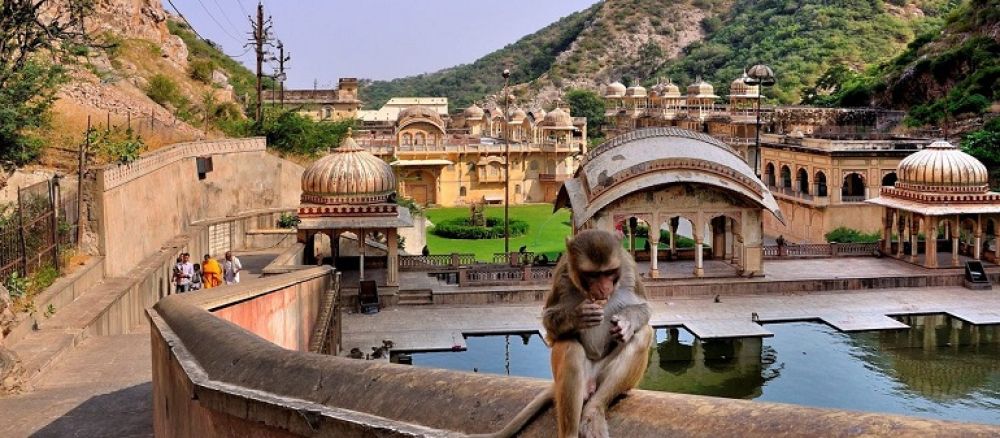

The Galtaji Temple, often referred to as the Monkey Temple, is an ancient Hindu pilgrimage site located in the town of Khania-Balaji, about 10 km away from Jaipur, in Rajasthan, India. Nestled between the Aravalli Hills, this temple is famous for its natural water springs, holy 'kunds' (water tanks), and, of course, the large tribe of monkeys that inhabit the area. The temple complex is built within a narrow crevice in the ring of hills that surround Jaipur. Its serene atmosphere and natural setting make it a popular destination for tourists and devotees alike.
The history of tourism at Galtaji Temple dates back several centuries, with the temple itself holding even older religious significance. The temple complex is believed to have been built in its present form in the 18th century by Diwan Rao Kriparam, a courtier of Sawai Jai Singh II, the founder of Jaipur. However, the site's history as a retreat for holy ascetics is much older, purportedly dating back to the early 16th century.
Tourism began to flourish in the 20th century when travelers from around the world started exploring India's historical and cultural heritage. Galtaji Temple gained attention for its architectural beauty, which includes painted walls, rounded roofs, and pavilions, all integrated into the natural landscape. The temple's springs, which are considered holy, are an essential part of the visit for pilgrims, who believe bathing in these waters can cleanse their sins. While the site was historically important for religious travelers, it began drawing general tourists due to its picturesque setting and lively monkey population.
In recent years, Galtaji Temple has seen a shift in tourist demographics and behaviors. There has been an increase in interest among domestic travelers, particularly those who are spiritually inclined or seeking a retreat from urban life. Social media and travel blogs have also played a crucial role in popularizing the temple as a tourist destination, bringing in visitors interested in photography and social media explorations.
Sustainability efforts have also been introduced, with initiatives to manage waste and maintain the sanctity of the temple's water resources. These efforts aim to preserve the site's ecological and spiritual significance.
While the Monkey Temple continues to enchant visitors with its history and unique appeal, it is essential for all tourists to be respectful of the cultural and environmental sensitivities of the area. The collective aim should be to maintain Galtaji Temple as a beloved and sustainable tourist destination for generations to come.